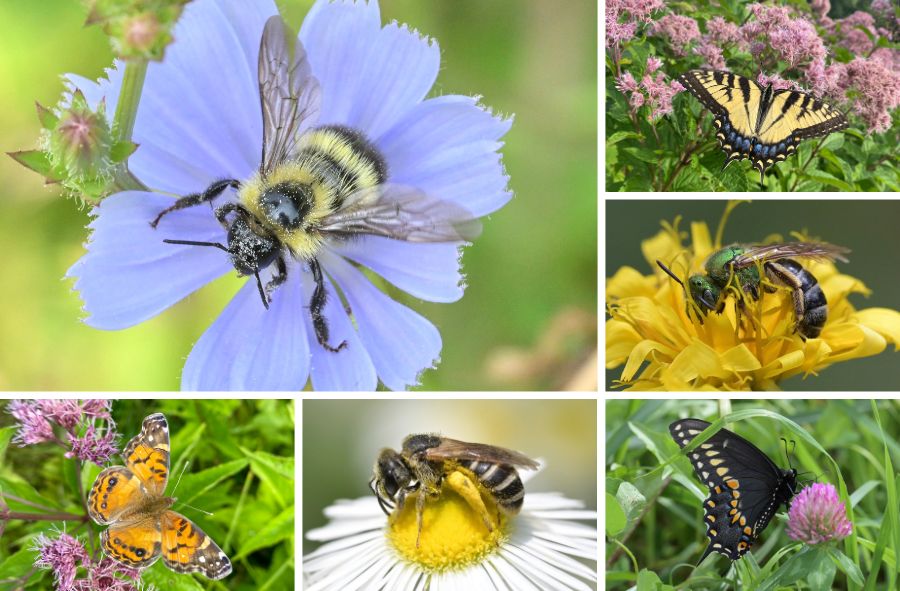
Written by Grace Kowalski, a pollinator inventory research assistant at Minute Man National Historical Park.
This summer, Minute Man National Historical Park started a project that focuses on identifying two kinds of pollinators: bees and butterflies. The goal of this project is to determine which bees and butterflies are in the park and when they are active. So far, we found that Minute Man is home to at least 18 different species of butterflies and 6 species of bumble bees.
The term “pollinator” refers to anything that spreads pollen from plant to plant. Pollen can be carried by non-living factors such as wind or water or by living animals such as insects, birds, bats, and more. Pollination is essential to the reproduction of plants, and these plants provide food, habitat, and resources for other animals within an ecosystem. Pollinators are essential to conserving natural areas because over 80 percent of all flowering plants rely on pollinators to survive.
However, pollinators are declining drastically in abundance and diversity. Some of the top threats to pollinators include shrinking habitats, invasive species, and pesticides. Pollinator activity data from this project can help us make more informed decisions to help conserve pollinator habitat at Minute Man National Historical Park.
Have you seen any pollinators recently in the park? Take a picture and add your findings to iNaturalist. Your entries will contribute to ongoing research about pollinators in the park.
About the Author: Grace Kowalski works as a pollinator inventory research assistant in the Scientists in Parks program. She graduated from the University of Oregon. Grace is working for the inventory and monitoring division of the National Park Service to collect pollinator data at Minute Man National Historical Park. This project collaborates with the Natural and Cultural Resources Team at Minute Man to collect data to conserve pollinator habitat.
Images above left to right, clockwise: A half-black bumble bee, Bombus vagans, feeding on chicory; A tiger swallowtail butterfly feeding on Joe Pye weed; A female bicolored striped sweat bee, Agapostemon virescens, feeding on hawkweed; A black swallowtail butterfly feeding on red clover; a sweat bee, Halictus ligatus, feeding on fleabane; an American lady butterfly feeding on Joe Pye weed.
Support the Friends of Minute Man by becoming a member today!